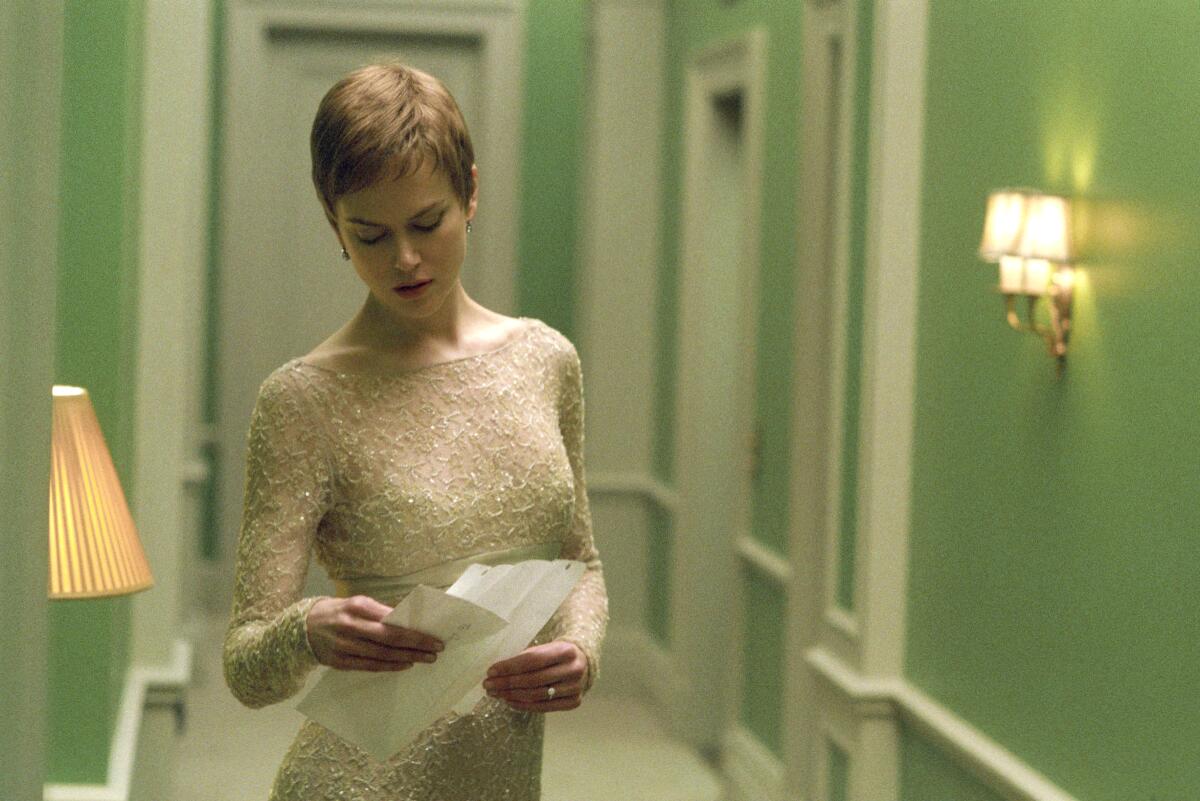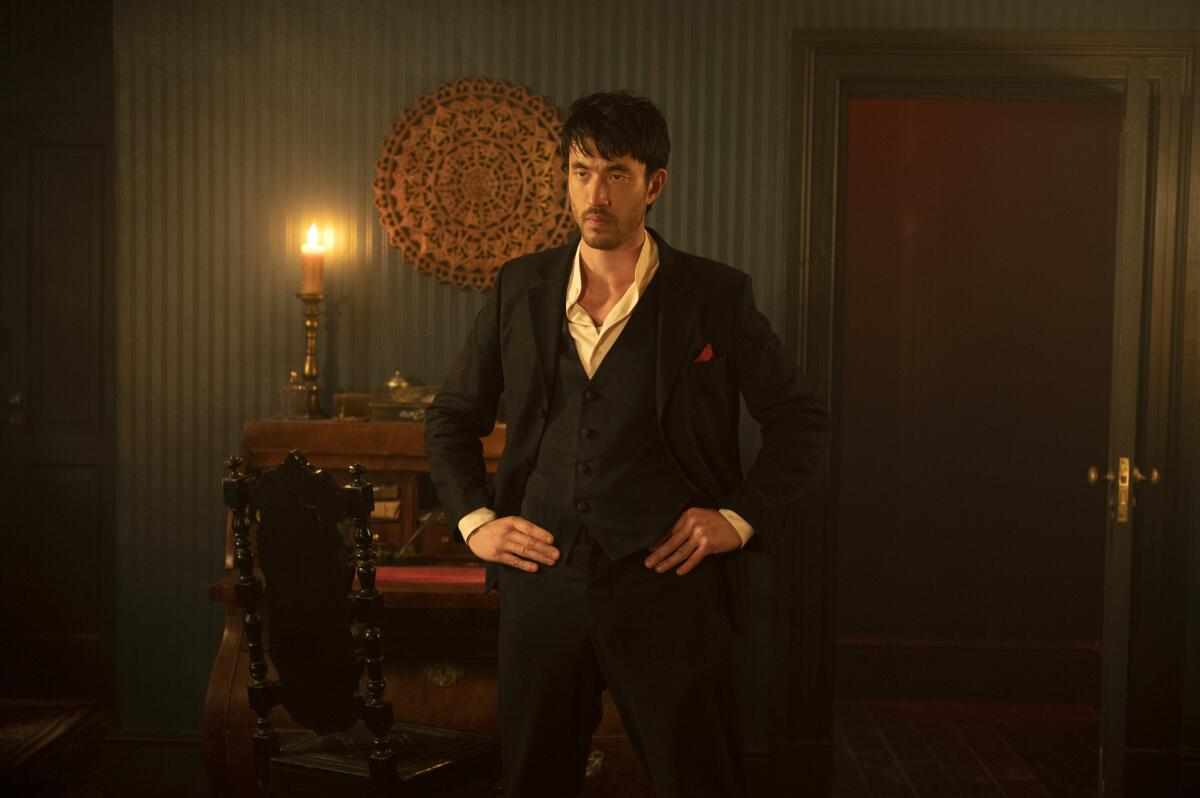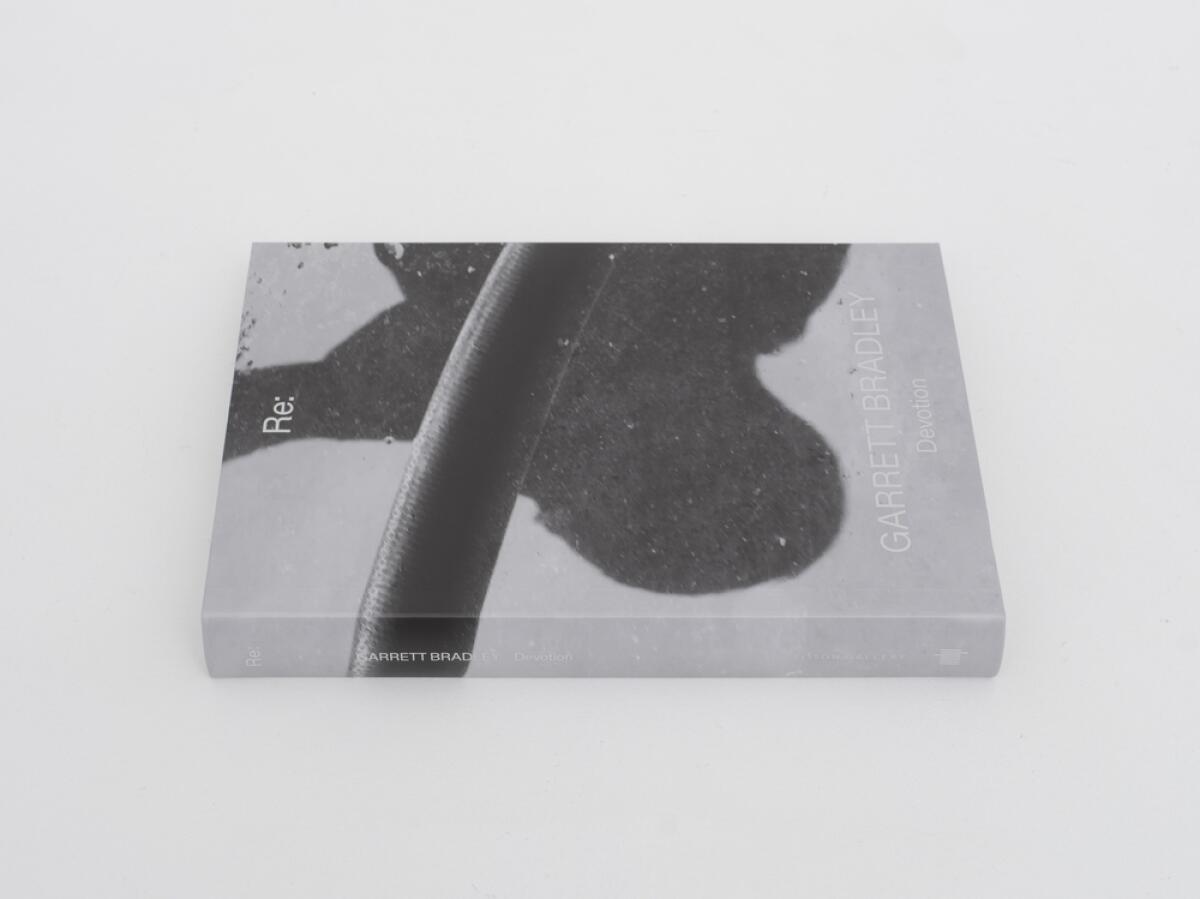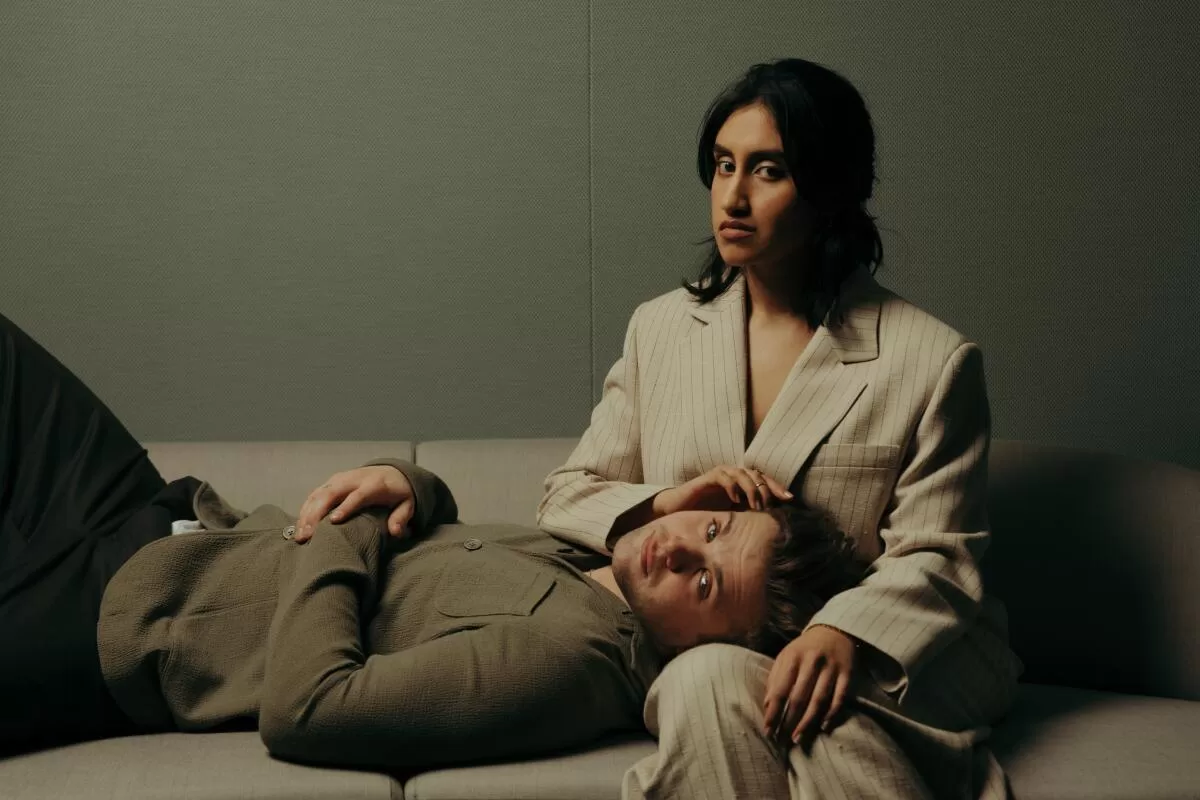While “Warrior,” the martial arts crime drama inspired by the writings of Bruce Lee, won’t be returning to Max for a fourth season, fans of the action-packed series are hoping the arrival of the show’s first three seasons on Netflix this week can generate enough noise to get it saved (again). Video journalist Jireh Deng explains why it is deserving of more episodes.
Also in Screen Gab No. 119, filmmaker Garrett Bradley swings by to discuss her book, “Devotion,” and we suggest ideas for what to stream this weekend.
You are reading Screen Gab newsletter
Sign up to get recommendations for the TV shows and streaming movies you can’t miss, plus exclusive interviews with the talent behind your favorite titles, in your inbox every Friday
You may occasionally receive promotional content from the Los Angeles Times.
ICYMI
Must-read stories you might have missed

Actors Ambika Mod and Leo Woodall, who star in Netflix’s “One Day,” at the Netflix offices in London.
(Jennifer McCord / For The Times)
In ‘One Day,’ a new Emma and Dexter bring angst and yearning (again and again) Ambika Mod and Leo Woodall, the stars of the latest adaptation of David Nicholls’ book, discuss their chemistry and how things end for their characters, Emma and Dexter.
‘The New Look’ explores the choices made by Coco Chanel and Christian Dior in World War II The Apple TV+ series examines Christian Dior’s connection to the French Resistance and Coco Chanel’s role as a Nazi agent in World War II.
Late night evolves slowly, as seen by ‘After Midnight’ and Jon Stewart’s ‘Daily Show’ return Though streaming and social media have upended how viewers consume late-night series, innovation on the shows themselves has been much more stagnant.
On the scene at the 2024 Oscar nominees luncheon, where stars and directors mingled An unusually strong crop of Oscar-nominated actors, directors and crew members gathered at the Beverly Hilton Hotel for a breath of relaxation amid campaigning.
Turn on
Recommendations from the film and TV experts at The Times

Nicole Kidman stars as Anna in Jonathan Glazer’s 2004 dramatic mystery “Birth.”
(James Bridges / Fine Line Features)
“Sexy Beast,” Birth,” “The Fall” (The Criterion Channel)
More people are talking about Jonathan Glazer now than ever before, as the British filmmaker enjoys the first Oscar nominations of his career for his Holocaust stunner “The Zone of Interest,” the most radical movie to compete for best picture and director since Ingmar Bergman’s “Cries and Whispers” 50 years ago. As it happens, Glazer’s career was worth celebrating from the start. His 2000 feature debut, the diamond-hard crime drama “Sexy Beast,” turns the bickering of London gangsters — played by Ray Winstone, Ian McShane and an inspired Ben Kingsley — into miniature masterpieces of verbal aggression. “Birth,” Glazer’s 2004 follow-up, may still be the high point of Nicole Kidman’s career. Watch as she conveys a universe of roiling emotions as the camera fixes on her face at an opera performance of Wagner’s “Die Walküre.” And “The Fall,” a short, does more in six minutes than most horror movies achieve in two hours, conveying masked entitlement, Trumpian hauteur and nothing short of the end of civilization. — Joshua Rothkopf
“Cheap Irish Homes” (Tubi)
I am a sucker for real estate shows — especially when they’re set abroad — and I will watch almost anything Irish, so when a friend recommended I check out “Cheap Irish Homes,” I knew I’d probably be hooked. I was. But what I couldn’t have predicted was the reassuring pragmatism of this show, which is as soothing as a cup of Barry’s Tea on a blustery afternoon. Just as the title suggests, “Cheap Irish Homes” follows people on the hunt for inexpensive property in Ireland, a country currently in the grips of a housing crisis (the problem is especially acute in Dublin, where the average rent is more than €2,000 a month). In each episode, host Maggie Molloy takes prospective buyers — often young professionals fleeing city prices — to tour properties in sleepier corners of the Emerald Isle (if you have no idea where County Sligo is, you will soon). To call most of the houses “fixer-uppers” would be euphemistic; prepare yourself for derelict cottages, haunted by the ghosts of my ancestors, where dusty portraits of long-dead popes hang on the mildew-stained walls. With a “passion for matching up house hunters with bargain-basement bungalows, forgotten farmhouses and cut-price cottages,” Molloy sets almost comically modest expectations for her TV clients, encouraging them to look past the collapsing chimneys and think twice about whether an outhouse is actually a deal breaker, because surely all they really need is a roof — or at least part of one — over their heads. Molloy is accompanied by Kieran McCarthy, a building engineer and man of few words who likes to point out damp patches on the walls. Dampness, or lack thereof, is probably the top must-have, in the way that open-concept kitchens and en-suite bathrooms might be on “House Hunters.” The show has a way of making you recalibrate everything you think you need in a house; you may find yourself scrolling through the listings on Molloy’s Instagram page, fantasizing about fixing up an old bank building in County Mayo or moving into a two-room cottage by the sea in Cork. In the early, pre-pandemic episodes, most of the property featured is under €100,00, but the average price point goes up considerably once COVID strikes — and, honestly, you may find yourself longing for the return of lower budgets and more decrepit houses. The fun is in looking past the soiled mattresses and moldy carpeting and seeing the potential, even if sometimes you really have to squint. — Meredith Blake
Catch up
Everything you need to know about the film or TV series everyone’s talking about

Andrew Koji in “Warrior.”
(HBO)
If you’re looking to satiate your weekend binge cravings with a series that may have slipped under your radar, look no further than the martial arts action saga “Warrior” (Max). All three seasons have just been added to Netflix’s catalog (it will remain available to stream on Max). Loosely based on Bruce Lee’s writings and set in historical times during the Gold Rush era of San Francisco, “Warrior” follows the journey of Andrew Koji’s Ah Sahm, a talented fighter from China who quickly becomes entangled in the territorial spats of the rival tongs, or Chinatown gangs.
If you’re a little squeamish when it comes to seeing graphic violence onscreen but can look past the gory disembowelment and hatchet fights, there’s something in “Warrior” for everyone. Strong women? Check. Queer characters? Check. Groundbreaking diversity with a stacked Asian cast? Triple check. Though the series bases its emotional truth on history, it takes license in crafting the fictional lines of its characters. Take for example the dynamic women in the series, like Olivia Cheng’s Ah Toy and Dianne Doan’s Mai Ling, both formerly Chinatown sex workers, who are seen wielding information to curry power with men around them who rely on brute force. The series has never lacked ingenuity or strong writing, but much like the fighting underdogs it portrays, “Warrior” has faced an uphill battle to survive cancellation.
Originally set up at Cinemax, the series nearly sunsetted after its second season in 2020, but Max, then known as HBO Max, swooped in to save it for a third season to the relief of fans. That relief was short-lived, though, because it was canceled again. Now the fate of a fourth season of “Warrior” is undetermined as executives decide whether the cult following around the show can grow with the Netflix effect. Anyone who’s watched the most recent season will tell you there’s a lot of loose ends to tie up. Here’s hoping “Warrior” gets to wrap its narrative arc. — Jireh Deng
Guest spot
A weekly chat with actors, writers, directors and more about what they’re working on — and what they’re watching

Filmmaker Garrett Bradley’s new book, “Devotion.”
(George Darrell / Lisson Gallery)
It’s fitting to mark the end of Carnival this week with a visit from Garrett Bradley, the filmmaker behind “Naomi Osaka” (Netflix) and the Oscar-nominated “Time” (Amazon Prime Video), whose debut feature, “Below Dreams,” is largely set in New Orleans. As Bradley prepares her adaptation of Octavia Butler’s “Parable of the Sower,” her latest project is a book, “Devotion” (MIT Press and Lisson Gallery), that documents her work’s distinctive blend of fiction and non-, film and video, Hollywood cinema and fine art. Bradley told Screen Gab about the “mantra” that informs her filmmaking, what she’s reading and more. — Matt Brennan
What have you watched recently that you are recommending to everyone you know?
I’ve been in a little bit of a cave honestly … not watching a whole lot. When an opportunity arises, I’ve been thinking more about books — Alain Locke’s “The New Negro: Voices of the Harlem Renaissance,” which is an anthology of fiction, poetry, essays which Locke edited and was published in 1925. Selected poems of Miklós Radnóti, which came recommended to me. A surprise gift of Marcel Proust’s “Swann’s Way,” which is trippy before bed, or if there’s time before your day starts. Timothy Snyder’s “On Tyranny,” Valerie Boyd’s “Wrapped in Rainbows,” Karla Holloway’s “A Death in Harlem.” And maybe “The House at Pooh Corner” too? Why not…
And after listing all these books, I’m realizing now that my answer might be totally out of touch to Screen Gabbers! Damn. Make them movies!
What is your go-to “comfort watch,” the movie or TV show you go back to again and again?
Anything that crackles. Expansive landscapes. Mostly old movies. I always have something playing in the background while working. Today it was Glauber Rocha’s “Deus e o Diabo na Terra do Sol” (“God and the Devil in the Land of the Sun,” aka “Black God, White Devil”). I think it was made in the ’60s. Heavy.
“Devotion” documents the process by which you create the indelible images in “Time” and other projects. What did you discover about how your own work operates from putting together a book about it that you hadn’t previously realized or articulated?
This is my first experience ever making a book and it was developed very much in conversation with Ossian Ward, the editor who had conceived of the idea to create a reader. So this is just the first of what will be a series with other artists and makers. There were some considerations that felt important to take into account knowing that … which created a kind of liberty for what it could be and what it could explore.
We started just by going through images and what ended up being almost 14 years of work. Doing that revealed certain tendencies and points of interest — a kind of vigilance in certain ways of making. And stepping back, it felt like these 14 years were a single chapter. And I feel myself now going elsewhere, into a new place, like running in a dark room but with better agility. And that’s scary and exciting. And to have something like this book, which encapsulates that chapter, is something I never could have dreamed of. And then there’s this thing that’s become sort of like a mantra: the proposal that images are belief systems. I take this idea very seriously — that we believe what we see and we [don’t] believe what we don’t see. And how intentional we must be then, when making things. Being able to include the minds of many other artists and thinkers (Legacy Russell, Doreen St. Felix, Tyler Mitchell, Ashley Clark, Alexandra Bell) became a way to wrestle with that idea in a way that wasn’t self-generating but a reflection of a larger, almost endless zeitgeist.
Can you give Screen Gab readers an update on where things stand with “Parable of the Sower”?
Only that I am completely and utterly devoted to it.
